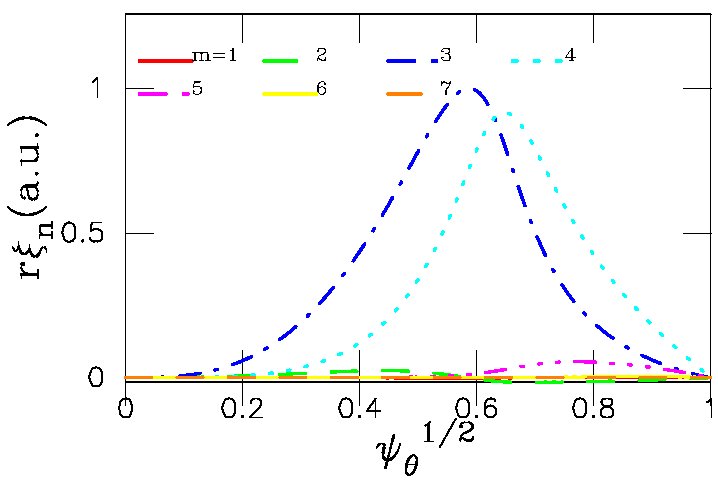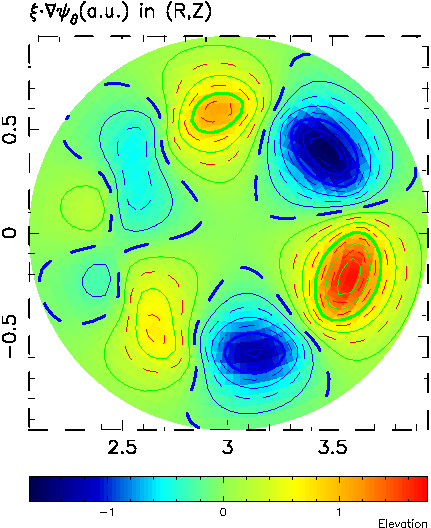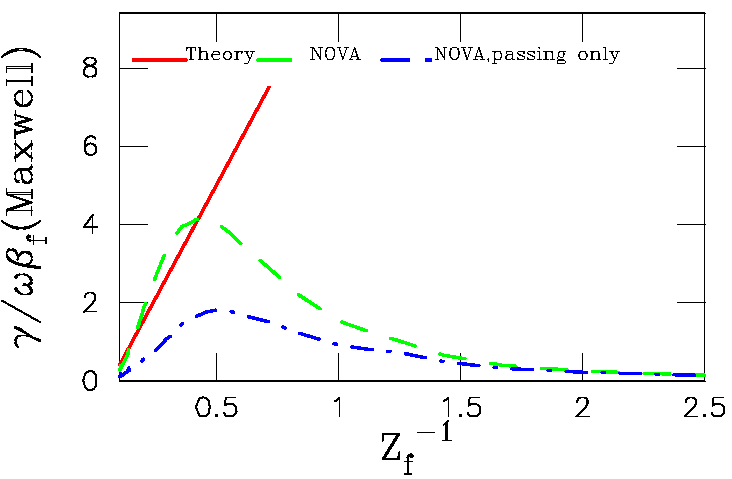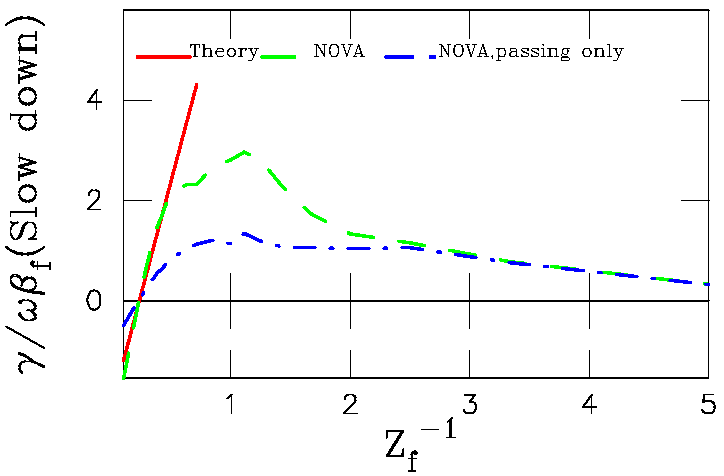Linear n=2 TAE structure and stability
Questions can be sent to N.N. Gorelenkov: ngorelen@pppl.gov.
We fix simple case with analytical plasma profiles
this case is similar to the previous one, but with n=2. We show
nevertheless used plasma parameters
R0=3m, a=1m,
circular, zero beta tokamak equilibrium,
q=1.5+0.6*psi where psi is a normalized
poloidal flux varying from 0 at axis to 1 at the edge.
Plasma density profile is constant.
Energetic ion parameters:
v_h/v_A =1.7
rho_h/a =0.085
EP beta profile ~ exp(-psi/0.37)
Distribution function is taken either Maxwellian or slowing down. In
the latter case we have
f=1/(v**3+v_crit**3) * exp(-<psi>/0.37)
where velocities are normalized to the injection velocity v_h and
v_crit=0.58
Note that <Psi> in this
expression is considered averaged over the particle guiding center
orbit. In this case it is a function of particle constants of motion as
it should be. One can show that for alpha particles the distribution
function is a function of <Psi>. We used <Psi>
computing
the critical velocity and the scattering frequency. One simple and
relatively accurate workaround of how to go from <Psi> to
particle integrals of motion is following.
If we define P_phi = e Psi
/mc - v|| R, we find that for
trapped particle with the accuracy up to ratio of the orbit width to
the minor radius times epsilon^2 we have P_phi = e <Psi> /mc. For
passing particles with the same accuracy we find P_phi = e*<Psi>
/mc - sigma*v*sqrt( 1 -mu*B0/E )R0, where sigma is the sign of v||, B0
is the magnetic field at the center of the magnetic surface, and R0 is
the major radius of the surface, mu is the adiabatic moment.
These parameters can correspond to deuterium plasma and EP mass and
charge:
m_i = m_f = 2
z_i = z_f = 1
EEP0 = 173keV
B0 = 1T
ne = 4.142 1013 cm-3
Te = 3.14 keV (used for v_crit value)
NOVA finds two modes. One is like regular (even coupletes) TAE with the
eigenfrequency omega = 0.5593 vA/
q1R0 where q1=q(a)=2.1.
The structure of this n=2 TAE is shown as radial dependence of r
times normal component of
the plasma displacement poloidal harmonics (below left) and the same
function in R,Z plane (below right).


Stability properties are computed first with the Maxwellian
distribution function of EPs.
Results are summarized in the following figure, where "effective"
particles charge is changed
during the scan. Growth rates are normalized to fast ion beta in the
center (beta=8pi pressure/B0^2,
where B0 is the magnetic field taken in the geometrical center of the
plasma) is plotted against zf-1:

For slowind down similar scan produces following dependencies:

In the latter case theory curve was obtained for the model distribution
function with v_crit term. Thus
good agreement with a theory in the ZOW limit (high Z_f) is achieved.
Theoretical expressions are derived for zero orbit EPs. The expressions
are documented in this FILE.



